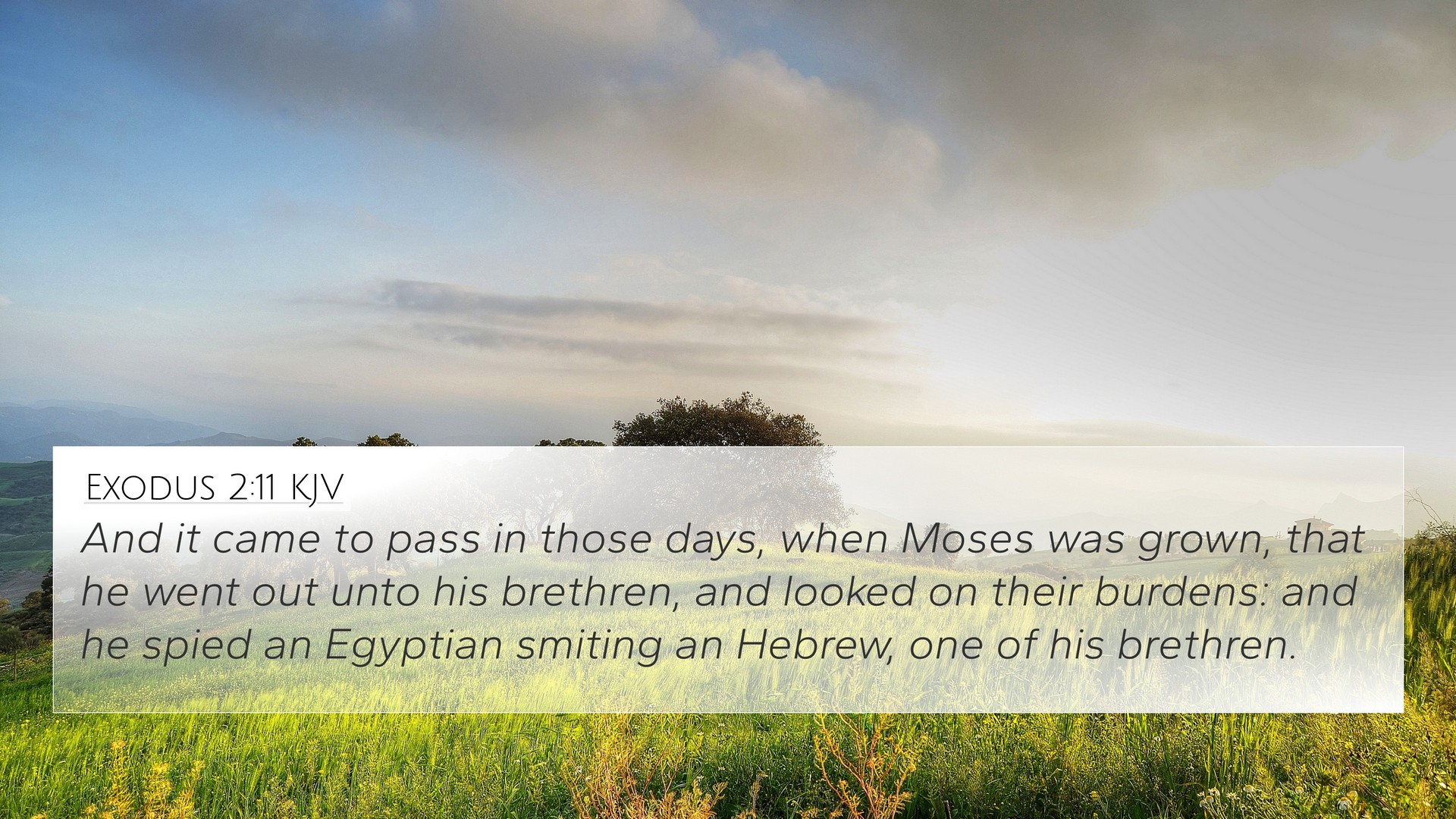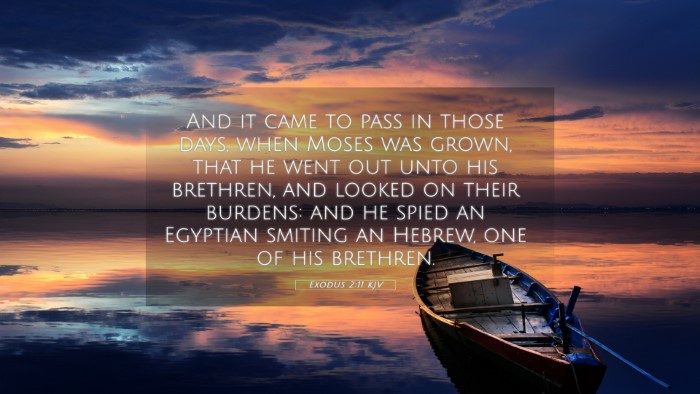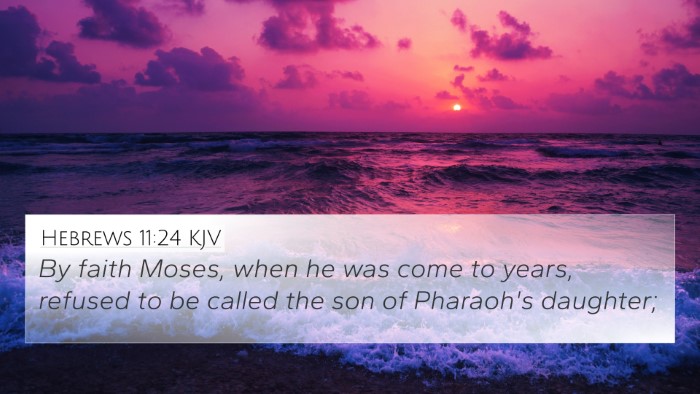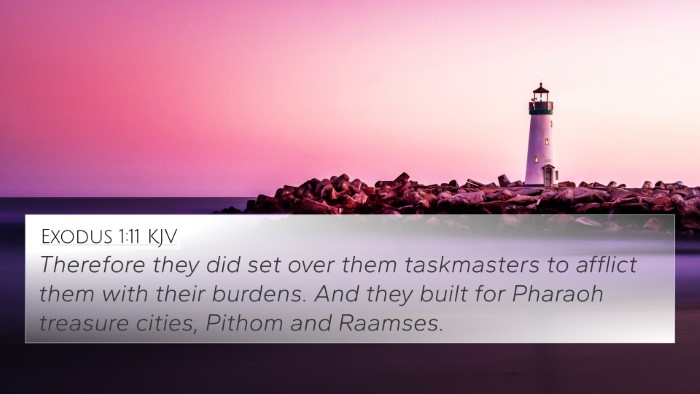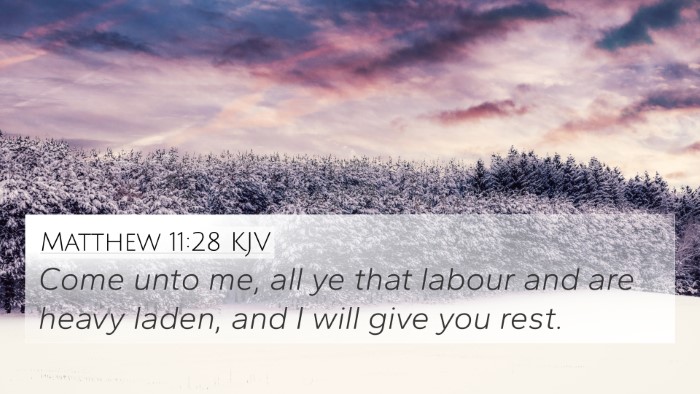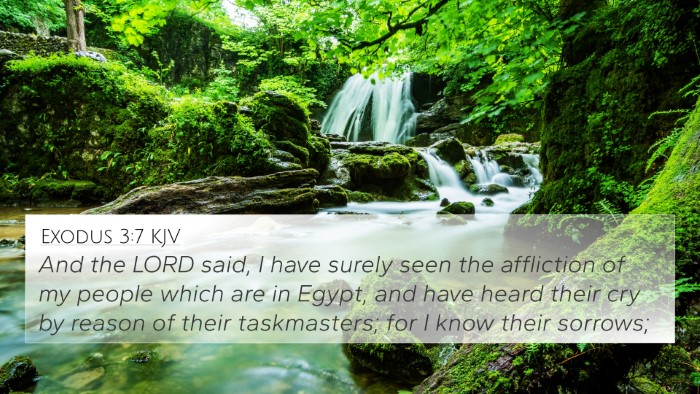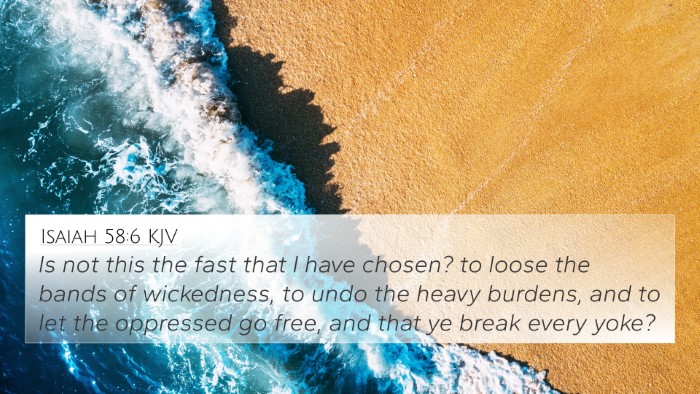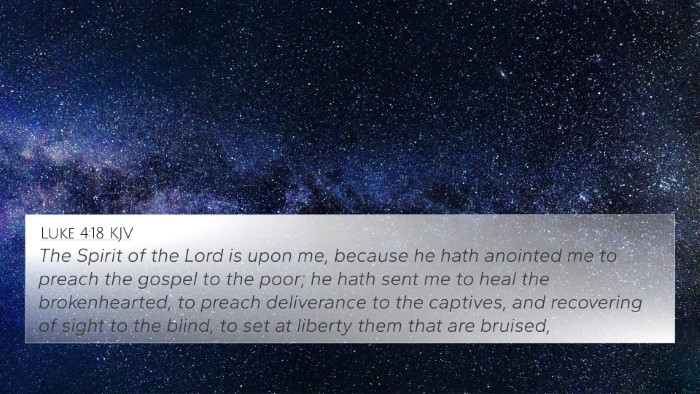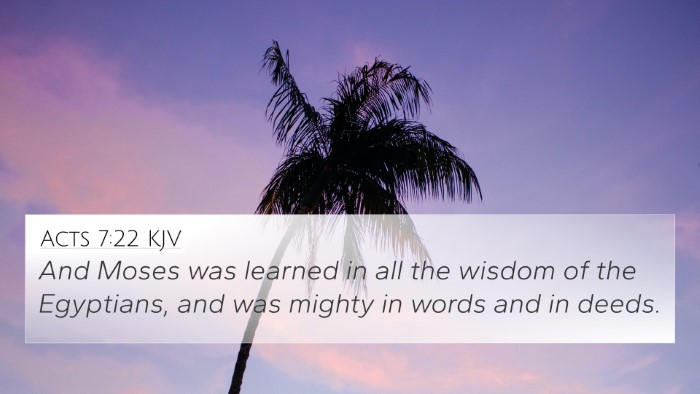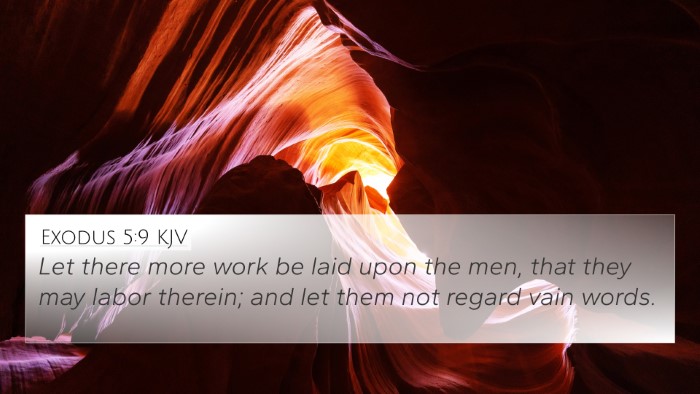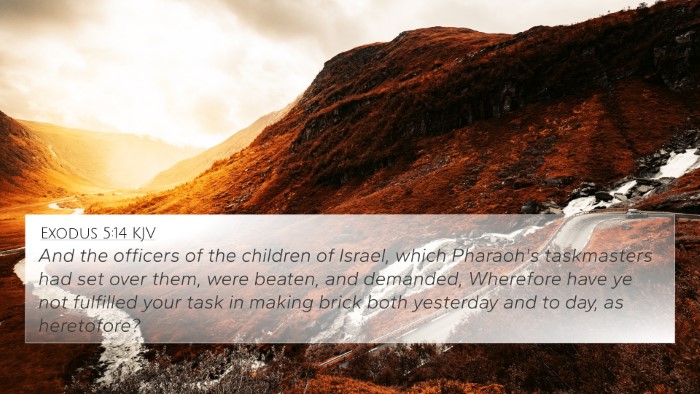Understanding Exodus 2:11
Exodus 2:11 states: "And it came to pass in those days, when Moses was grown, that he went out unto his brethren, and looked on their burdens: and he spied an Egyptian smiting an Hebrew, one of his brethren."
This verse marks a pivotal moment in the life of Moses, leading to significant events in the biblical narrative. It encapsulates themes of identity, justice, and divine calling, offering rich insights when examined through public domain commentaries.
Contextual Analysis
-
Identity and Compassion:
Moses, raised in the royal courts of Egypt, identifies with the plight of his fellow Hebrews. This episode emphasizes his growing awareness of their suffering. Matthew Henry highlights that Moses went out to see his brethren's burdens, indicating his compassion and connection to his people, despite his own privileged upbringing.
-
Social Justice:
The act of witnessing an Egyptian beating a Hebrew serves as a catalyst for Moses’ future actions. Albert Barnes notes that this moment illustrates a turning point where Moses begins to recognize the injustice faced by his people, stirring a desire to take action against oppression.
-
Divine Preparation:
Adam Clarke suggests that this experience was part of God's preparation for Moses. Seeing the suffering of his brethren likely instilled a sense of mission within him, foreshadowing his role as the deliverer of Israel. The verse signifies God’s methodology in preparing leaders through real-life experiences.
Thematic Connections
This passage is not isolated; it resonates with numerous themes across the scripture. Exploring these connections via cross-referencing enriches understanding. Below are notable parallels and thematic Bible verse connections related to Exodus 2:11:
-
Exodus 3:10: "Come now, therefore, and I will send thee unto Pharaoh, that thou mayest bring forth my people the children of Israel out of Egypt."
This verse shows the culmination of Moses' preparation, leading directly from his compassion in Exodus 2:11 to God’s command to deliver Israel.
-
Acts 7:23-25: "And when he was full forty years old, it came into his heart to visit his brethren the children of Israel. And seeing one of them suffer wrong, he defended him..."
This New Testament reference provides insight into Moses’ motivations, confirming that his actions stemmed from an inner calling to advocate for justice.
-
Hebrews 11:24-26: "By faith Moses, when he was come to years, refused to be called the son of Pharaoh's daughter; Choosing rather to suffer affliction with the people of God..."
This further illustrates Moses' choice to identify with his people rather than enjoy the temporary pleasures of Egypt, reinforcing his deep sense of identity.
-
Psalm 105:26-27: "He sent Moses his servant; and Aaron whom he had chosen."...
This reflects God's sovereignty in choosing Moses, linking his initial act of witnessing injustice to his ultimate role in leadership.
-
Isaiah 19:20: "And it shall be for a sign and for a witness unto the Lord of hosts..."
This can be seen as a prophetic foreshadowing of Moses' role as a leader, a 'sign' for Israel, linking the past with future deliverance.
-
Matthew 2:15: "And was there until the death of Herod: that it might be fulfilled which was spoken of the Lord by the prophet..."
Linking the deliverance narratives in Exodus and the New Testament, this shows the continuity of God’s saving work throughout scripture.
-
Romans 12:19: "Dearly beloved, avenge not yourselves..."
This verse connects with the theme of justice and mercy, which Moses grapples with throughout his life, relevant to his action in Exodus 2:11.
Conclusion
In summary, Exodus 2:11 serves as an essential verse for understanding Moses’ character and God’s plan for Israel's deliverance. The compassion shown by Moses, noted by commentators, is pivotal as it sets in motion events that lead to the liberation of the Israelites. Interpreting this scripture through a comparative analysis with related Bible verses enriches our understanding of themes such as identity, justice, and providential preparation evident throughout the Bible.
Tools for Cross-Referencing
To dive deeper into connecting this verse with others, various Bible reference resources like a Bible concordance or cross-reference guide can be incredibly helpful. They allow for a richer study experience by identifying connections between Old and New Testament themes or linking scripture across various book genres.
